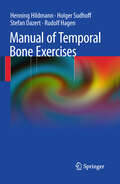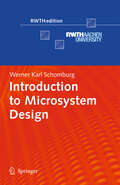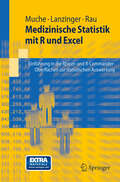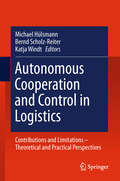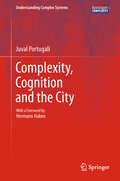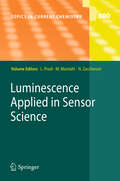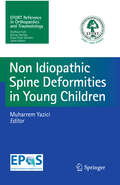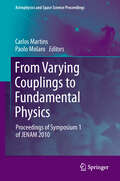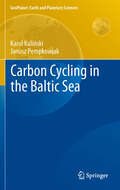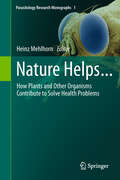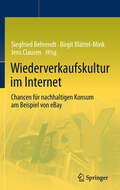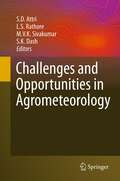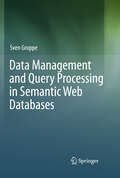- Table View
- List View
The European Union after Lisbon
by Stelio Mangiameli Hermann-Josef BlankeThe book contains 24 contributions from European law scholars and practitioners analysing the constitutional basis of the European Union and the normative orientation of the Common Foreign and Security Policy (CFSP) as well as the central economic and monetary provisions (TFEU) after the Reform Treaty of Lisbon. Presenting the findings of a European research team, which is composed of authors from eight Member States, the publication underlines the aspiration of the editors to thoroughly analyse the constitutional law of the European Union currently in force.
Advanced Rubber Composites (Advances in Polymer Science #239)
by Gert HeinrichMorphology-Property Relationship in Rubber-Based Nanocomposites: Some Recent Developments, by A. K. Bhowmick, M. Bhattacharya, S. Mitra, K. Dinesh Kumar, P. K. Maji, A. Choudhury, J. J. George and G. C. Basak; * Rubber-Clay Nanocomposites: Some Recent Results, by Amit Das, De-Yi Wang, Klaus Werner Stöckelhuber, René Jurk, Juliane Fritzsche, Manfred Klüppel and Gert Heinrich; * Surface Modification of Fillers and Curatives by Plasma Polymerization for Enhanced Performance of Single Rubbers and Dissimilar Rubber/Rubber Blends, by J. W. M. Noordermeer, R. N. Datta, W. K. Dierkes, R. Guo, T. Mathew, A. G. Talma, M. Tiwari and W. van Ooij; * Recent Developments on Thermoplastic Elastomers by Dynamic Vulcanization, by R. Rajesh Babu and Kinsuk Naskar; * PTFE-Based Rubber Composites for Tribological Applications, by M. S. Khan and G. Heinrich
Thinking About Social Policy: The German Tradition
by Franz-Xaver KaufmannThe book traces the political history of the concept of social policy. "Social policy" originated in Germany in the mid 19th century as a scholarly term that made a career in politics. The term became more prominent only after World War II. Kaufmann, the doyen of the sociology of social policy in Germany, argues that "social policy" responds to the modern disjunction between "state" and "society" diagnosed by the German philosopher Hegel. Hegel's disciple Lorenz von Stein saw social policy as a means to pacify the capitalist class conflict. After World War II, social policy expanded in an unprecedented way, changing its character in the process. Social policy turned from class politics into a policy for the whole population, with new concepts - like "social security", "redistribution" and "quality of life" - and new overarching formulas, "social market economy" and "social state" (the German version of "welfare state"). Both formulas have remained indeterminate and contested, indicating the inherent openness of the idea of the "social".
Manual of Temporal Bone Exercises
by Holger Sudhoff Henning Hildmann Stefan Dazert Rudolf HagenEvery resident in otolaryngology has to practice on temporal bones before operating on patients. Whilst the systematic training includes use of the microscope and surgical instruments, heavy emphasis is also placed on knowledge of the surgical anatomy of the middle ear and the temporal bone. This lavishly illustrated manual offers an overview of all such important structures and provides the reader with a helpful approach to gain the knowledge necessary to start operating on patients. It also supports experts to improve and teach their skills.
Fundamentals of Scientific Computing
by Bertil GustafssonThe book of nature is written in the language of mathematics -- Galileo Galilei How is it possible to predict weather patterns for tomorrow, with access solely to today's weather data? And how is it possible to predict the aerodynamic behavior of an aircraft that has yet to be built? The answer is computer simulations based on mathematical models - sets of equations - that describe the underlying physical properties. However, these equations are usually much too complicated to solve, either by the smartest mathematician or the largest supercomputer. This problem is overcome by constructing an approximation: a numerical model with a simpler structure can be translated into a program that tells the computer how to carry out the simulation. This book conveys the fundamentals of mathematical models, numerical methods and algorithms. Opening with a tutorial on mathematical models and analysis, it proceeds to introduce the most important classes of numerical methods, with finite element, finite difference and spectral methods as central tools. The concluding section describes applications in physics and engineering, including wave propagation, heat conduction and fluid dynamics. Also covered are the principles of computers and programming, including MATLAB®.
Introduction to Microsystem Design
by Werner Karl SchomburgThis book systematically describes the design options for micro systems as well as the equations needed for calculating the behavior of their basic elements. The fundamental equations needed to calculate the effects and forces that are important in micro systems are also provided. Readers do not require previous knowledge of fabrication processes. This second edition of the volume is a thoroughly revised and extended update. The target audience primarily comprises experts in the field of micro systems and the book is also suitable for graduate engineering students. For quick reference, equations are presented in tables that can be found in an index at the end of the book.
Medizinische Statistik mit R und Excel
by Rainer Muche Michael Rau Stefanie LanzingerVielfach genutzt für die Verarbeitung von Daten in Tabellenform, war Excel bisher für statistische Analysen weniger geeignet. Seit 2009 kann mit dem Add-In RExcel die Statistiksoftware R eingebunden werden. Der Band bietet die erste Einführung auf Deutsch zur Benutzung der RExcel-Oberfläche. Anhand eines Beispieldatensatzes aus der Herz-Kreislaufforschung werden Deskriptive Statistik, Korrelation und Regression, statistische Tests, Überlebenszeitanalyse sowie Fallzahlplanung nachvollziehbar dargestellt. Mit Schritt-für Schritt-Anleitungen und Tipps.
Asymmetric Catalysis from a Chinese Perspective (Topics in Organometallic Chemistry #36)
by Shengming MaQi-Lin Zhou and Jian-Hua Xie: Chiral Spiro Catalysts.- Fuk Loi Lam, Fuk Yee Kwong and Albert S. C. Chan: Chiral Phosphorus Ligands with Interesting Properties and Practical Applications.- Jiang Pan, Hui-Lei Yu, Jian-He Xu, Guo-Qiang Lin: Advances in Biocatalysis: Enzymatic Reactions and Their Applications.- Mei-Xiang Wang: Enantioselective Biotransformations of Nitriles.- Man Kin Wong, Yiu Chung Yip and Dan Yang: Asymmetric Epoxidation Catalyzed by Chiral Ketones.- W. J. Liu, N. Li and L. Z. Gong: Asymmetric Organocatalysis.- Qing-Hua Fan and Kuiling Ding: Enantioselective Catalysis with Structurally Tunable Immobilized Catalysts.- Chang-Hua Ding, Xue-Long Hou: Transition Metal-Catalyzed Asymmetric Allylation.- Jian Zhou and Yong Tang: Enantioselective Reactions with Trisoxazolines.- Xiang-Ping Hu, Duo-Sheng Wang, Chang-Bin Yu, Yong-Gui Zhou, and Zhuo Zheng: Adventure in Asymmetric Hydrogenation: Synthesis of Chiral Phosphorus Ligands and Asymmetric Hydrogenation of Heteroaromtics.
Autonomous Cooperation and Control in Logistics: Contributions and Limitations - Theoretical and Practical Perspectives
by Michael Hülsmann Bernd Scholz-Reiter Katja WindtMany new technologies - like RFID, GPS, and sensor networks - that dominate innovative developments in logistics are based on the idea of autonomous cooperation and control. This self-organisational concept describes "...processes of decentralized decision-making in heterarchical structures. It presumes interacting elements in non-deterministic systems, which possess the capability and possibility to render decisions. The objective of autonomous cooperation and control is the achievement of increased robustness and positive emergence of the total system due to distributed and flexible coping with dynamics and complexity" (Hülsmann & Windt, 2007). In order to underlie these technology-driven developments with a fundamental theoretical foundation this edited volume asks for contributions and limitations of applying the principles of autonomous cooperation and control to logistics processes and systems. It intends to identify, describe, and explain - in the context of production and distribution logistics - the effects on performance and robustness, the enablers and impediments for the feasibility, the essential cause-effect-relations, etc. of concepts, methods, technologies, and routines of autonomous cooperation and control in logistics. Therefore, the analyses collected in this edited volume aim to develop a framework for finding the optimal degree as well as the upper and lower boundaries of autonomous cooperation and control of logistics processes from the different perspectives of production technology, electronics and communication engineering, informatics and mathematics, as well as management sciences and economics.
Non Coding RNAs in Plants
by Jan Barciszewski Volker A. ErdmannIn the most recent years, each of the RNA silencing pathways of plants have appeared to generate ncRNAs with dedicated functions, specialized biological activities and specific functional scopes. RNA silencing plays a crucial role in coordinating the expression, stability, protection and inheritance of eukaryotic genomes. It compromises several mechanisms, that invariably depend on core small non coding RNAs and that achieve dedicated sequence-specific functions. RNA silencing has been recognized to carry critical developmental, stress-response and bodyguard functions be coordinating the expression, protection, stability and inheritance of virtually all eukaryotic genomes. Thus, the ncRNAs encompass a wide set of mechanisms that achieve specialized functions.
Complexity, Cognition and the City: Simulation, Cognition And Vr In The Study And Planning Of Cities (Understanding Complex Systems)
by Juval PortugaliComplexity, Cognition and the City aims at a deeper understanding of urbanism, while invoking, on an equal footing, the contributions both the hard and soft sciences have made, and are still making, when grappling with the many issues and facets of regional planning and dynamics. In this work, the author goes beyond merely seeing the city as a self-organized, emerging pattern of some collective interaction between many stylized urban "agents" - he makes the crucial step of attributing cognition to his agents and thus raises, for the first time, the question on how to deal with a complex system composed of many interacting complex agents in clearly defined settings. Accordingly, the author eventually addresses issues of practical relevance for urban planners and decision makers. The book unfolds its message in a largely nontechnical manner, so as to provide a broad interdisciplinary readership with insights, ideas, and other stimuli to encourage further research - with the twofold aim of further pushing back the boundaries of complexity science and emphasizing the all-important interrelation of hard and soft sciences in recognizing the cognitive sciences as another necessary ingredient for meaningful urban studies.
Macroeconomic Analysis of Monetary Unions
by Carmen Díaz-Roldán Oscar Bajo-RubioThe book develops a general framework for the macroeconomic modeling of monetary unions. The starting point of the analysis is the standard two-country Mundell-Fleming model with perfect capital mobility, extended to incorporate the supply side in a context of rigid real wages, and modified so that the money market is common for two countries forming a monetary union. The model is presented in two versions: for a small and a large monetary union, respectively. After solving each model, the authors derive multipliers for monetary, expenditure, supply, and external shocks, both in the short and the long run; a graphical analysis is also provided. Special attention is paid to the crucial distinction between symmetric and asymmetric shocks.
Reinraumtechnik
by Hans-Peter Hortig Lothar Gail Udo GommelDer Band bietet eine fundierte Darstellung der Reinraumtechnik als branchenübergreifende Disziplin. Dabei verknüpfen die Autoren die Grundlagen der Reinraumtechnik mit deren Anwendungen und mit einer Anleitung zum selbständigen Erarbeiten von Problemlösungen. Für die 3. Auflage wurden Ergebnisse der nationalen und internationalen Reinraumkongresse ebenso berücksichtigt wie neue Regulierungen der Pharmazie, aktuelle Richtlinien und Anwendungen. Die Themen Hygienetechnik und Reinstwassertechnologie werden jetzt ausführlicher behandelt.
Tribology in Total Hip Arthroplasty
by Karl KnahrDuring the 2010 EFORT Congress in Madrid, many interesting topics relating to tribology in total hip arthroplasty were discussed during a special day devoted entirely to the subject. So successful was the day, and such was the broad interest in the discussions, that EFORT decided that publication of all the presentations would be warmly welcomed by fellow professionals who were unable to attend. This book is the result. It includes detailed information on the different articulating materials and the wear to which they are subject. The various factors that contribute to bearing performance and control wear are thoroughly evaluated, and careful consideration is given to the technology and design solutions proposed with a view to producing low-wearing hip joints. This book will be of interest both to novices who want to learn more about the field and to experienced orthopaedic surgeons wishing to keep abreast of the latest developments.
A Concise Guide to Nuclear Medicine
by Abdelhamid H. ElgazzarNuclear medicine is an important component of modern medicine. This easy-to-use book is designed to acquaint readers with the basic principles of nuclear medicine, the instrumentation used, the gamut of procedures available, and the basis for selecting specific diagnostic or therapeutic procedures and interpreting results. After an introductory chapter on the history, technical basis, and scope of nuclear medicine, a series of chapters are devoted to the application of nuclear medicine techniques in the different body systems. In addition, the use of nuclear medicine methods within oncology is carefully examined, covering diagnosis, staging, assessment of treatment response, radiotherapy planning, and the sentinel node technique. The book concludes with a chapter devoted to nuclear medicine therapy. This practical and up-to-date guide to nuclear medicine is ideal for beginners and will also help professionals who need to retrieve useful information rapidly.
Luminescence Applied in Sensor Science
by Luca Prodi Nelsi Zaccheroni Marco MontaltiMolecular Logic Gates and Luminescent Sensors Based on Photoinduced Electron Transfer, by A. Prasanna de Silva and S. Uchiyama; Luminescent Chemical Sensing, Biosensing, and Screening Using Upconverting Nanoparticles, by D. E. Achatz, R. Ali, and O. S. Wolfbeis; Luminescence Amplification Strategies Integrated with Microparticle and Nanoparticle Platforms, by S. Zhu, T. Fischer, W. Wan, A. B. Descalzo, and K. Rurack; Luminescent Chemosensors Based on Silica Nanoparticles, by S. Bonacchi, D. Genovese, R. Juris, M. Montalti, L. Prodi, E. Rampazzo, M. Sgarzi, and N. Zaccheroni; Fluorescence Based Sensor Arrays, by R. Paolesse, D. Monti, F. Dini, and C. Di Natale; Enantioselective Sensing by Luminescence, by A. Accetta, R. Corradini, and R. Marchelli
Non-Idiopathic Spine Deformities in Young Children
by Muharrem YaziciNon-idiopathic early onset scoliosis represents a true challenge to the physician due to the significance of the ongoing growth of the spine, the risk of curve progression, and the risk of pulmonary insufficiency. A comprehensive review of the growth mechanisms of spine in infancy forms the basis of the book. Clinical evaluation and imaging of early onset scoliosis contribute to the diagnostic overview. The main causes of non-idiopathic early onset scoliosis are briefly described in the second part of the book. The last group of chapters presents the conservative and surgical treatments that are available along with their results, chances and challenges. This comprehensive guide is an opportunity for every specialist involved in the treatment of these severe deformities, to obtain an update of the actual trends and knowledge in the field in a one-point reference.
From Varying Couplings to Fundamental Physics
by Carlos Martins Paolo MolaroNature is characterized by a number of physical laws and fundamental dimensionless couplings. These determine the properties of our physical universe, from the size of atoms, cells and mountains to the ultimate fate of the universe as a whole. Yet it is rather remarkable how little we know about them. The constancy of physical laws is one of the cornerstones of the scientific research method, but for fundamental couplings this is an assumption with no other justification than a historical assumption. There is no 'theory of constants' describing their role in the underlying theories and how they relate to one another or how many of them are truly fundamental. Studying the behaviour of these quantities throughout the history of the universe is an effective way to probe fundamental physics. This explains why the ESA and ESO include varying fundamental constants among their key science drivers for the next generation of facilities. This symposium discussed the state-of-the-art in the field, as well as the key developments anticipated for the coming years.
Carbon Cycling in the Baltic Sea (GeoPlanet: Earth and Planetary Sciences)
by Janusz Pempkowiak Karol KulinskiThe Baltic Sea is an area extensively explored by the oceanographers. Hence it is one of the most often described marine areas in the scientific literature. However, there are still several fields which are poorly investigated and reported by scientists. One of them is the carbon cycle of the Baltic Sea. Although it is believed the shelf seas are responsible for about 20% of all marine carbon dioxide uptake, while they constitute only 7% of the whole sea surface, still a scientific debate exists on the role of the Baltic Sea in the global carbon cycle. "Carbon cycle of the Baltic Sea" is intended to be a comprehensive presentation and discussion of state of the art research by biogeochemists involved in the Baltic Sea carbon cycle research. This work presents both qualitative and quantitative descriptions of the main carbon flows in the Baltic Sea as well as their possible shifts induced by climatic and global change.
Nature Helps...
by Heinz MehlhornNature helps... of course at first itself by developing measures that give bacteria, fungi, plants and animals a chance to be successful in their struggle for life. As a latecomer on Earth, Homo sapiens was gifted with some droplets of the divine spirit of recognition and thus became able to observe, to analyse and recombine skills of other living beings and to use them for his overwhelming career over the last 10,000 years. Of course fungi, plants, animals and even bacteria were primarily used by mankind as food or as lifestyle products such as beer, but soon it became clear that there was much more potential hidden in these organisms and that they could be used for other purposes, too. Extracts of plants and fungi were recognized as powerful remedies, as medicines, as insecticides or acarizides, as repellents against parasites or even as weapons, e.g. when poisonous compounds from frogs or plants were applied to arrowheads. Over the last 110 years the pharmaceutical industry has often simulated nature by analyzing complex organic substances taken from living organisms and then producing by synthesis absolutely pure compounds, which mostly consisted of only one single active substance. These products had the advantage of acting against precisely one target and thus produced fewer possible side effects than the complex plant extracts. However, the more serious side effect was that disease agents could develop resistances to pure medicinal products much more easily. Thus after 70 years of excellent prospects for chemotherapy, some dark clouds appeared and quickly gathered, so that several therapeutic remedies now no longer work. Therefore in many countries - especially in those where the pure chemotherapeutics are too expensive for the poor population - the cry "back to nature" is becoming louder and louder. This has led to an enormous increase of studies that again use natural extracts as remedies in the fight against diseases. The present book summarizes examples of promising aspects in a broad spectrum of applications and shows how extracts derived from bacteria, marine organisms, plants or even animals may help to treat infectious diseases, how such organisms may keep away parasites and pests from the bodies of plants or animals, including humans, and how they can be used directly to aid in diagnosis, promote wound healing and even to help catch criminals. These 15 chapters offer not only basic research on these different fields, but also show how useful and effective products can be developed from research.
Wiederverkaufskultur im Internet
by Siegfried Behrendt Jens Clausen Birgit Blättel-MinkMit Blick auf einen nachhaltigen Konsum eröffnen elektronische Handelsplattformen neue Spielräume. In dem Band werden die Ergebnisse einer empirischen Studie vorgestellt, für die das Kauf- und Verkaufsverhalten, die Motivationen sowie die mit dem Online-Handel verbundenen Umweltauswirkungen erhoben wurden. Am Beispiel von eBay zeigt die Untersuchung erstmals in sehr umfassender Weise das ökologische Potenzial des Online-Handels mit Gebrauchtgütern. Es liegt im Wesentlichen darin, die Lebens- und Nutzungsphase von Produkten zu verlängern.
Challenges and Opportunities in Agrometeorology
by M.V.K. Sivakumar L. S. Rathore S. D. Attri S. K. DashThe global food security and sustainable agriculture are the key challenges before the scientific community in the present era of enhanced climate variability, rapidly rising population and dwindling resources. No part of the world is immune from meteorological extremes of one sort or another posing threat to the food security. Agrometeorology has to make most efficient use of the opportunities available in achieving the objectives of enhancing productivity and maintenance of sustainability. Increased awareness and technological advancement have provided opportunities to develop efficient agrometeorological services that can help cope with risks. These include improvements in weather forecasting, better understanding of the monsoon variability and crop-weather relationships, advances in operational agrometeorology and agrometeorological information systems, adaptation strategies to climate change and improved risk evaluation and management. This book based on an International Workshop held in New Delhi, India should be of interest to all organizations and agencies interested in agrometeorological applications.
Data Management and Query Processing in Semantic Web Databases
by Sven GroppeThe Semantic Web, which is intended to establish a machine-understandable Web, is currently changing from being an emerging trend to a technology used in complex real-world applications. A number of standards and techniques have been developed by the World Wide Web Consortium (W3C), e.g., the Resource Description Framework (RDF), which provides a general method for conceptual descriptions for Web resources, and SPARQL, an RDF querying language. Recent examples of large RDF data with billions of facts include the UniProt comprehensive catalog of protein sequence, function and annotation data, the RDF data extracted from Wikipedia, and Princeton University's WordNet. Clearly, querying performance has become a key issue for Semantic Web applications. In his book, Groppe details various aspects of high-performance Semantic Web data management and query processing. His presentation fills the gap between Semantic Web and database books, which either fail to take into account the performance issues of large-scale data management or fail to exploit the special properties of Semantic Web data models and queries. After a general introduction to the relevant Semantic Web standards, he presents specialized indexing and sorting algorithms, adapted approaches for logical and physical query optimization, optimization possibilities when using the parallel database technologies of today's multicore processors, and visual and embedded query languages. Groppe primarily targets researchers, students, and developers of large-scale Semantic Web applications. On the complementary book webpage readers will find additional material, such as an online demonstration of a query engine, and exercises, and their solutions, that challenge their comprehension of the topics presented.
Recycling of Biomass Ashes
by Heribert Insam Brigitte A. KnappThe use of renewable bioenergy is increasing, and so is the production of associated wastes: biomass ashes. This book presents eleven chapters on the options for recycling such biomass ashes, ranging from their use as fertilizer in agriculture and forestry to their application as a supplement for the production of cement-based materials or bricks. The book also examines the pros and cons for each of the different uses of biomass ashes.
Groundwater in the Arab Middle East
by Wolfgang WagnerThe book gives an outline of prevailing hydrogeologic conditions in the Arab Middle East together with the geologic background. Emphasis is given to relationships between the main features influencing the hydrogeologic conditions - regional geologic developments, paleogeographic conditions, morphology, climate and paleo-climate - and the resulting hydrogeologic features: formation of aquifers, distribution of major aquifers, main groundwater flow systems, occurrence of renewable and fossil groundwater. Reported data on hydraulic aquifer parameters, recharge rates and groundwater flow volumes are evaluated with a view to arrive at characteristic values under the specific hydrogeologic and climatic conditions. The area considered covers approximately the Arabian Plate. Information on the following countries is included: Bahrain, Iraq, Jordan, Kuwait, Lebanon, Oman, Qatar, Saudi Arabia, Syria, United Arab Emirates, West Bank and Gaza, Yemen.



